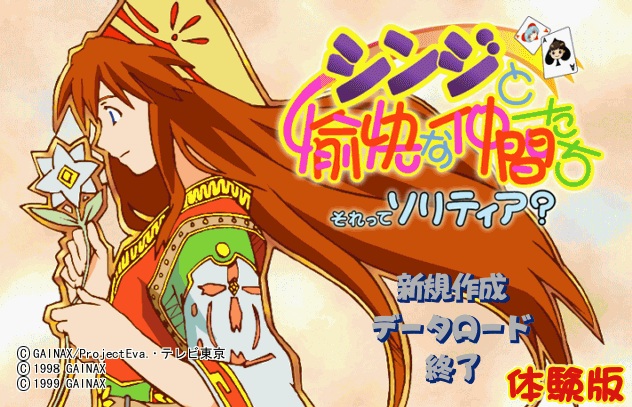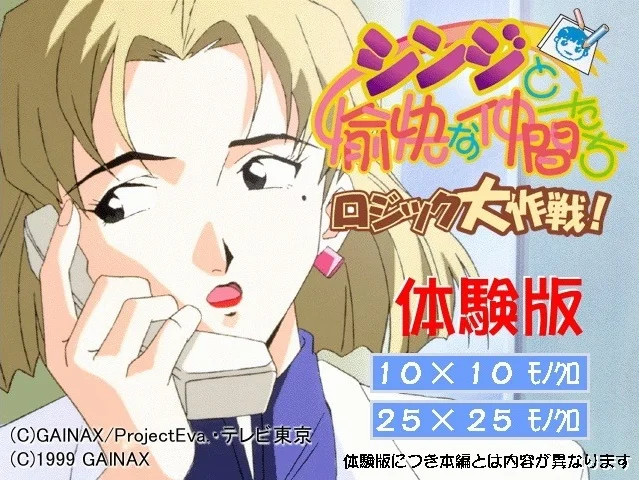A Complete History of Neon Genesis Evangelion Video Games, Pt. 2
So much has happened since the first part of this piece. Netflix unceremoniously dumped the Neon Genesis Evangelion TV series along with the Death (True) 2 and End of Evangelion films onto its service, and the discourse was exhausting, albeit not in the way everyone was expecting. Instead of the awkward, uninformed takes on the series’s plot and themes everyone expected to happen (although there were still plenty of those because of course there were), the vast majority of this summer’s Evangelion discussion centered around its new dubs (the almost completely incomprehensible Italian dub was even pulled from Netflix) and the removal of “Fly Me to the Moon” from the end credits of the TV series. In my personal opinion, the new English dub isn’t absolutely terrible - Casey Mongillo and Jonny Yong Bosch turn in excellent work as, respectively, Shinji and Toji - but it definitely has some weirdness due to Studio Khara-mandated changes like having everyone pronounce NERV as “Nellf” and referring to the Eva pilots as “children”, plural, even when referring to one of them at a time. The English retranslation was also the center of controversy due to the translator choosing to downplay Shinji and Kaworu’s relationship (a total 180 from the ADV Films translation many fans have been watching for the last 20+ years) and translating “sects” as “leftists” and “left-wing terrorists”, among other things, plus, to top it all off, character designer Yoshiyuki Sadamoto went and did both a big ole’ racism and sexism at the same time right at the end of summer, angering many Evangelion fans in Japan and abroad. In the end, a lot of people learned lessons about localization vs straight-forward translations, many of us wound up appreciating the work Matt Greenfield, Amanda Winn-Lee, and others put into the original English localization even more than we already did, and a lot of people were hit hard with Eva fatigue.
Predictably, I also got burned out on Evangelion for a bit. I took a break from this series of articles to, among other things, write this piece about Spider-Man games for Adventures in Poor Taste!, research and work on other stuff (stay tuned in the coming weeks for articles on the Panzer Dragoon and Samurai Shodown OVAs, Dream Hunter Rem, and the start of an in-depth episode guide for Don’t Leave Me Alone, Daisy, the first of several similar pieces I’ll be doing), and enjoy my summer when I could. I also had to do a lot more research for this one - whereas the first few years of Evangelion games consisted almost entirely of easily obtainable, short narrative-based games, developers working on the franchise post-Girlfriend of Steel took things in different directions that required me to learn quite a bit about other, non-Evangelion topics in order to properly write about a lot of them. It also didn’t help that most of the games in this article have been poorly documented over the years; I spent almost a full month combing through various versions of GAINAX’s website through Wayback Machine collecting as much information as possible while cross-checking it with other sources, including Japanese Wikipedia, ancient forum threads about the games, and anything else I could find, and almost everything that wasn’t GAINAX’s official site was full of misinformation.
Crack open a cold beer or a can of Evangelion-branded UCC Coffee everyone, because we’ve got a lot of incredibly obscure card games and stuff to go over.
In 1998, GAINAX spun Evangelion off into a prolific sub-series that, over the course of about a year and a half, would see 8 entries across game consoles and (mostly) PC. The Good Friends series would see Shinji and the rest of the Evangelion cast, sometimes joined by characters from other GAINAX franchises like Nadia: The Secret of Blue Water and Gunbuster, battle it out over card games and mahjong. Some titles would give them cool new outfits, two of them would allow players to see them with no outfits, and all of these titles offer interesting content for hardcore Eva fans.
It is important to again note that we’re going to be undoing years and years AND years of misinformation related to these titles throughout this article. Some key points before we begin -
Almost all of these games are classified as “lost media” by several sources, most notably the Lost Media Wiki. This is inaccurate, as they are far from lost - a bit difficult to obtain outside of Japan, yes, and surprisingly unpreserved online considering how popular of a franchise Neon Genesis Evangelion is, but theoretically someone could buy them off Yahoo Auctions or Amazon.jp (or just straight-up go to Japan and buy them), have them shipped outside of the country, and dump them online. It might be expensive, but far rarer games have turned up before. Also both the Playstation and Saturn versions of Eva and Good Friends for PS1 have been preserved through the Redump Disc Preservation Project, CG dumps and artbook scans for Stripping Instrumentality Project can be found on various places throughout the internet, and half of the games had demos. For years, the only way to find these demos involved using the Wayback Machine to go to GAINAX’s website and poking around until you found a working link but this article contains working mirrors for all of them. There’s also a 10 minute video montage of all of the demos contained in this article.
Only two of these games, Stripping Instrumentality Project and the PC port of Eva and Good Friends, contain pornographic content, despite all of the games having artwork featured in the Stripping Instrumentality Project art book and other official GAINAX lewd art compilations. A lot of the erotic content from both of these games would later be recycled into other GAINAX products with similar titles that were not games, but are listed as such on various websites.
This article is completely safe for work and contains no nudity.
The vast majority of information from this article comes from Wayback Machine archives of GAINAX’s english-language website. Yes, GAINAX had a fully-functioning, english-language version of their website back in the late 90’s, and it had tons of information about all of their software (including oddities like this official mod for Microsoft Combat Flight Simulator based on Aoki Uru, the sequel to Wings of Honneamise that has been in development hell for almost 30 years) and anime products. At one point the product pages for the games, as well as the Good Friends series hub, had tons of bonus content like RealMedia video and Flash animations; unfortunately, most of them are broken now. I did my best to preserve what I can - every article on Beyond Electric Sheep is updated with new information at some point, and I feel like this one’s probably going to have tons of stuff added to it over the next year, especially after I get ahold of the actual game discs for most of these.
NEON GENESIS EVANGELION - EVA AND GOOD FRIENDS (1998)
aka Shinseiki Evangelion: Eva to Yukai na Nakamatachi
p. GAINAX, d. Ninelives, TamTam Co., LTD (console ver.), GAINAX (PC ver.)
Plat. PC, Sony Playstation, Sega Saturn
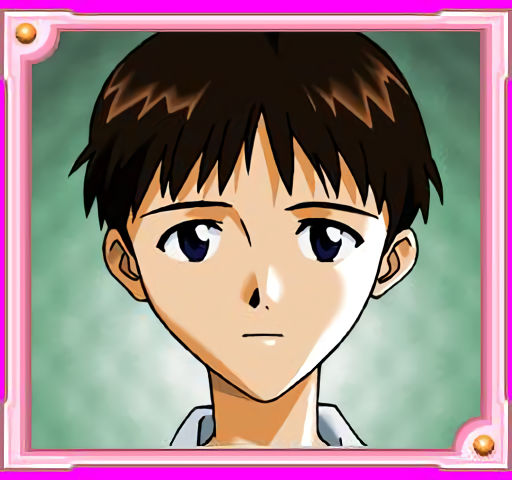
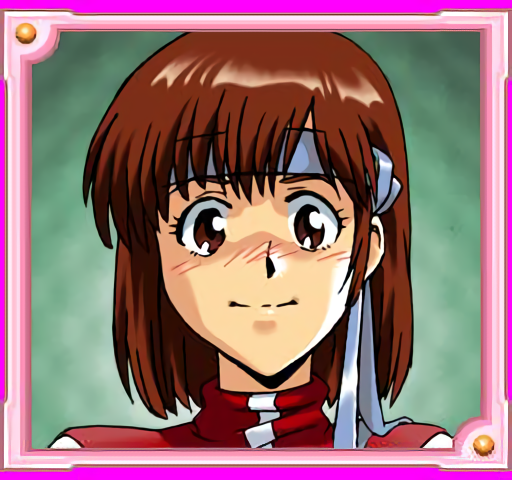
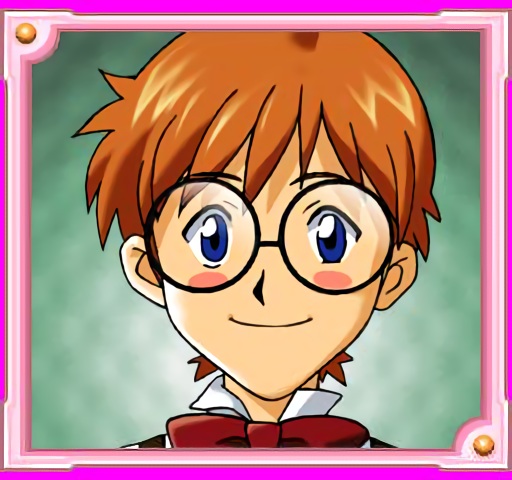
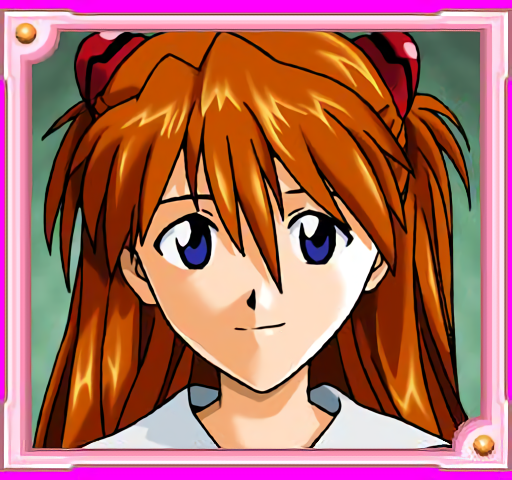

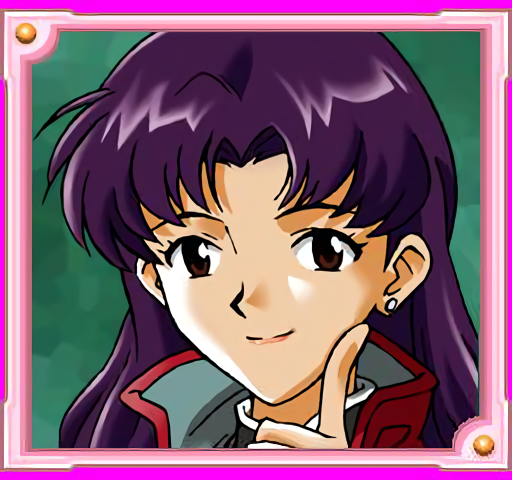

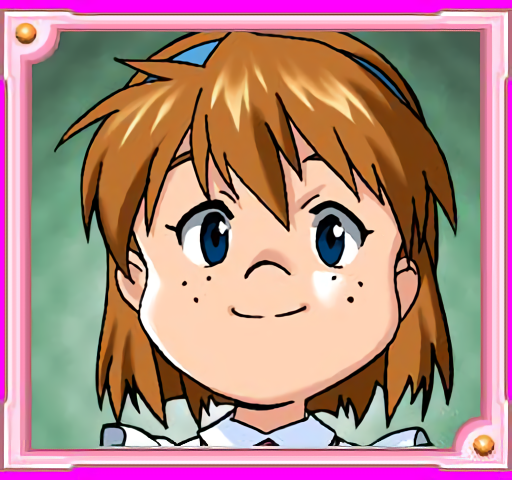
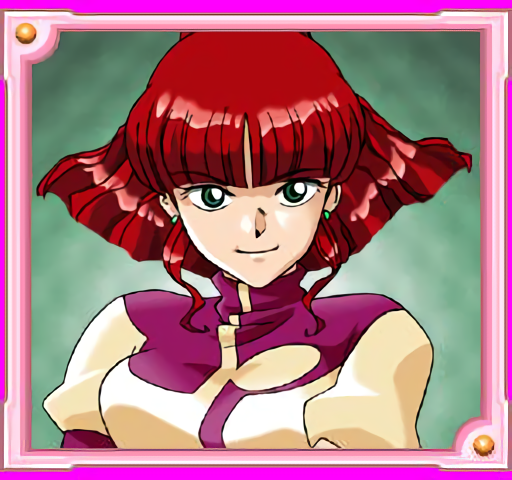
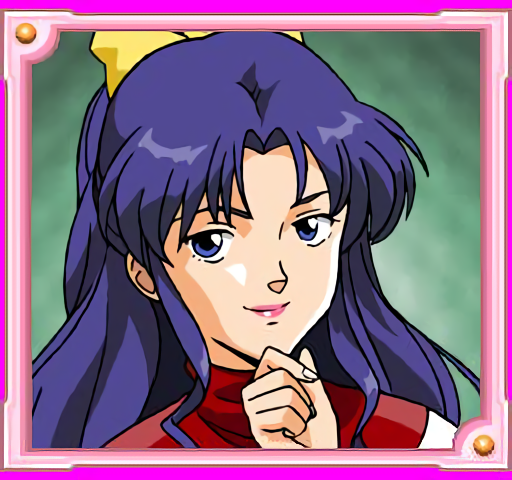
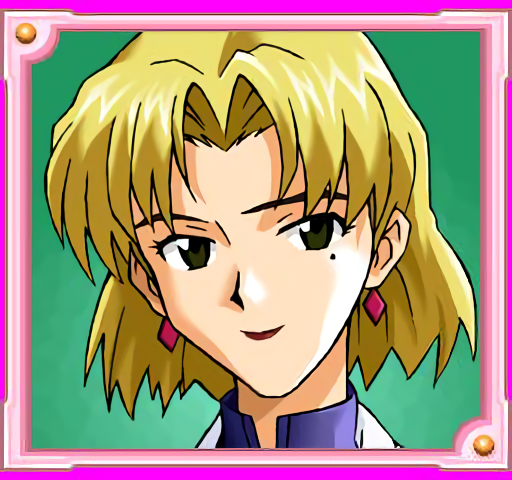
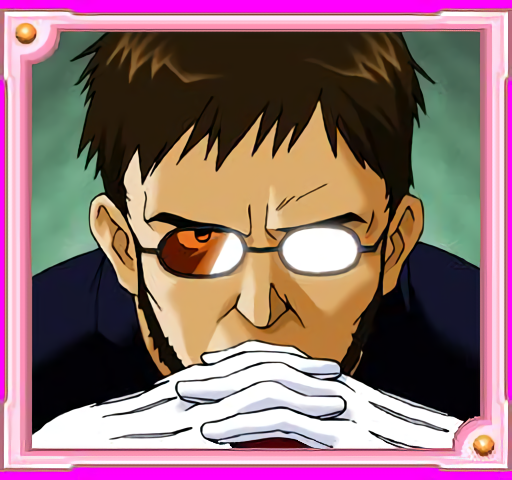
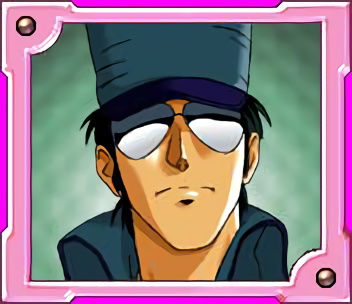
Developed by TamTam, Eva and Good Friends is a mahjong game in which players can choose between 15 different characters from Neon Genesis Evangelion, Nadia: The Secret of Blue Water, and Gunbuster. Each character is voiced by their original VAs, and the game even contains a mini-encyclopedia, complete with voiceover, with facts about each character.
The game’s story mode allows players to choose between Shinji, Noriko from Gunbuster, and Jean from Nadia, and features tons of original artwork and voiceover as the characters meet up and compete in a mahjong tournament. Unfortunately, no fantranslation of any kind exists for the game but, again, thanks to GAINAX’s old official English website, we have kind of an idea as to what happens in the game. Basically, the characters get pamphlets inviting them to a mahjong tournament in which the grand prize is a single wish. Shinji finds a pamphlet folded into a paper airplane while out shopping for party supplies with Toji. While at the party, Rei unfolds the paper airplane and discovers the invitation to the mahjong tournament on it, causing everyone to pester him into signing up. Shinji’s final opponent is Gendo, because of course he is. Jean’s story starts with him ignoring Nadia in favor of his inventions, sending her into a depressive state. King, Nadia’s pet lion club, conveniently shows up with a flyer for the mahjong competition in his mouth, and begins pestering Jean to enter with her. Jean goes along with it, thinking it’ll cheer her up, but his friendliness and boyish charm win over all of his opponents, making her incredibly jealous instead. Nadia’s jealousy factors into Noriko’s story as well - fellow Gunbuster pilot Jung Freud tells her about the tournament, and, after remembering a dream she had involving her dead friend Smith Toren, she decides to enter. Noriko uses the tournament as a chance to find a new boyfriend and, after figuring out that neither Shinji nor Toji are her type, falls for Jean. After completing the initial stories, a new chapter starring Misato is unlocked, but there is no English-language summary as to what happens during that chapter in existence, and I wouldn’t have even found out about it if I had not found a brief overview of the game on a Japanese blog (complete with screenshots!).
The original console versions released on June 23rd, 1998 (Playstation) and November 5th, 1998 (Saturn); the PC port followed on June 25th, 1999 and added quite a bit of new content. The artwork, no longer constrained to the limitations of the 32-bit consoles, was redone in higher resolutions, new dialogue was recorded for the expanded story mode, Kaworu, Toji, and Nadia’s Elektra were added as playable characters, and eroge elements were added, bringing the game more in line with other non-console mahjong titles of the era. After beating their opponent with a high enough score, players could play a roulette game to undress the character they won against (with the exception of the characters from Nadia, presumably due to licensing restrictions from NHK and Group TAC, who actually owned the franchise). The art for these images was handled by Cool Devices artist Hiroyuki Utatane, as well as The Manzai Comics artist Hizuri Imai, plus GAINAX’s own Kazuhiro Takamura (character designer for Mahoromatic, Strike Witches, Queens Blade, and He is My Master), and Shunji Suzuki (key animator on the vast majority of GAINAX works up to this time). This was not the first time GAINAX had released official nudes of their characters, but it is notable that all of the men can be stripped too, so fans who wanted to see Gendo or Gunbuster’s Coach Koichi naked were able to do so. The PC release also came with a bonus mini-CD containing the new dialogue recorded for the game, as well as postcards drawn by GAINAX co-founder Takami Akai; pre-order bonuses included a GAINAX cup and a special card containing a password to a website in which GAINAX uploaded special, exclusive dialogue files.
Evangelion fever was still going strong in Japan in the late 90’s (like it ever died down), and, shortly after the release of Eva and Good Friends, GAINAX would announce that they were turning the spin-off into its own series. They quickly launched a subsection just for the games on their website, offering up content like exclusive 4-koma panel comics by Kimiko Higuchi (also responsible for the manga sequences in FLCL), and fan polls. Unfortunately, due to how GAINAX’s website was coded, a lot of this content is lost to time, but we do have the results of one of the fan polls - which GAINAX character did the fans in 1998 want to see most in a swimsuit? Nadia won by a landslide, followed by Misato, Kaworu, Elektra, and Jung Freud. The pictures and Nadia’s winning message were not picked up by Wayback Machine’s crawlers, but we’ve still got these fan comments to look at!
Here’s a video of a full playthrough of Shinji’s story. There aren’t a whole lot of videos about the game out there, but the game itself is easy enough to find - while not as inexpensive as most of the games in the last article, physical copies can still be found for less than $20 on the secondary market. The hard part is actually finding the game; since there’s no English title on the case, it’s commonly listed under its romanized title or a machine translated version like Eva and Funny Friends.
In pretty quick succession, 7 new Good Friends games would be released throughout 1999. Unlike the original title, they would be PC exclusives and keep the crossovers to a minimum, choosing to focus entirely on Evangelion characters. They’d also, until the final release, leave mahjong behind for other games.
NEON GENESIS EVANGELION - SHINJI AND GOOD FRIENDS: IS THAT SOLITAIRE? (1999)
p. GAINAX, d. GAINAX
plat. PC
The first entry in the subseries, now retitled Shinji and Good Friends, would release on Feburary 26th, 1999. Harkening back kind-of to an Old Maid minigame contained on a screensaver GAINAX had released a few years before, Shinji and Good Friends: Is That Solitaire? contains a bunch of variations of Solitaire. There’s regular Solitaire, Klondike Solitaire, Golf Solitaire, Pyramid Solitaire, Beleaguered Castle Solitaire, Accordion Solitaire, “My Pace” Solitaire, and even FreeCell, which was incredibly popular at the time due to it coming pre-installed on every Windows computer starting with Windows 95. The game even featured in-depth stat tracking for die-hard Solitaire fans, and first pressings of the game contained a pack of real-life Evangelion trading cards.
The actual game itself is… it’s Solitaire. There’s multiple backgrounds and decorative decks to choose from, music from the series in MIDI format, and players can not only choose their favorite Eva character to play as, but can also choose a character to support them with hints during the game. Outside of some appearances in Digital Card Library, this was actually Kaworu’s first appearance in an Evangelion game; the demo, in fact, only allows you to select him as support.
Oh yes, there is a demo, and you can still download it. Click here to download a (very limited) demo of Shinji and Good Friends: Is That Solitaire, direct from 1999 via the Wayback Machine. Despite the claims of the game being the “English” version, only the readme is in English, and I’d recommend downloading the Japanese language pack for your version of Windows if you haven’t already (sorry Mac and Linux users, although I’m pretty sure this would run well in a virtual machine; it’s an old game) before trying it out.
NEON GENESIS EVANGELION - SHINJI AND GOOD FRIENDS: MISSIONS OF LOGIC (1999)
p. GAINAX, d. GAINAX
plat. PC
Released on May 28, 1999, Missions of Logic is a vaguely Ritsuko Akagi-themed collection of Eva-themed nonagrams. For those of you unfamiliar with nonagrams - it’s the same thing as picross. They’re logic-based puzzles in which you fill in a grid based on numbers on the side of the grid telling you how many blocks to fill in. If you’ve ever played a picross game, you know exactly what to expect. If you haven’t played a picross game, please stop reading this article immediately and go try one out, because they’re real good. I recommend the Picross S series for the Nintendo Switch or Konami Pixel Puzzle Collection for iOS and Android.
Missions of Logic contains a total of 200 nonagrams for players to solve, divided up into five different puzzle fields laid out upon a map of Tokyo-3. Completing a full field unlocks a new desktop wallpaper players can use outside of the game. There are two mini-games (an Eva quiz, and some sort of reversal game), which allow players to earn items they can use on puzzles, and chibi versions of Evangelion characters dance next to the puzzles and offer hints during gameplay. It’s not a bad package for fans of both Evangelion and Picross titles.
Like Is This Solitaire!, Missions of Logic had a demo too; two of them, in fact. The first demo offers two different puzzles, an easy 10x10 one and a more difficult 25x25 one, whereas the second demo swaps out the 25x25 puzzle with a 15x15 color puzzle, in which players must also color in the grid while trying to figure out which blocks to fill. The pre-order bonus for Missions of Logic was a metal bookmark with a picture of Ritsuko on it.
NEON GENESIS EVANGELION - SHINJI AND GOOD FRIENDS: SECOND HANAFUDA IMPACT (1999)
p. GAINAX, d. GAINAX
plat. PC
The third title in the Shinji and Good Friends series, Second Hanafuda Impact, released June 4th, 1999 and, as the title states, has the Eva cast playing Hanafuda. Second Hanafuda Impact also begins a tradition that would continue on through the rest of the Good Friends games until Stripping Instrumentality Project - the game features new art in which the characters are seemingly in some sort of alternate universe, in this case, one based around Evangelion characters hanging out in kimonos. The game is packed full with new art with all of your favorite Evangelion characters in traditional Japanese garb; new dialogue was also recorded for the game, as well.
The actual game… well, it’s Hanafuda. Major features were a tutorial mode in which the player can choose to play as Rei or Shinji and have Gendo or Misato show them the basics of the game, and a tournament mode structured similarly to a single-player arcade mode in a fighting game; upon completion of the tournament mode, the player unlocks special, game-exclusive desktop wallpaper. There’s also a cheat function in which, after maxing out a character’s anger meter, players can attack their opponent with either Pen-Pen or, in an act of complete overkill, the Lance of Longinus, and send their hand of cards into disarray. The demo allows players to go through the Shinji x Misato version of the tutorial mode, and a bonus notebook featuring GAINAX animator Takeshi Honda’s depiction of Misato from the game was given out to customers who purchased the game from GAINAX’s online store.
There are other Shinji and Good Friends games, and we’re going to get to those, but we’re going to take a quick detour first. 1999 was a very big year for Evangelion videogames, and Summer 1999 in particular was loaded for Eva fans. Not only did they get Missions of Logic and Second Hanafuda Impact within a week of each other, but a company outside of GAINAX would finally get to touch the series again, and take it to a place the franchise hadn’t gone yet. On June 25, 1999, roughly two weeks after the release of Second Hanafuda Impact, Bandai would give the series its first real action game.
NEON GENESIS EVANGELION (1999)
aka Neon Genesis Evangelion 64
p. Bandai, d. BEC Co., LTD
plat. Nintendo 64
Developed by BEC Co., a company who had previously handled tons of other anime adaptations (most notably Digimon World, Dragon Ball Z Legends, and Cowboy Bebop for the Playstation), and released June 25th, 1999, Evangelion 64 adapted the events of both the Eva TV series and End of Evangelion into an action-focused minigame collection of sorts. The game’s 13 missions adapt most of the series’s key moments - there’s angel battles that play out like a very clumsy (but gorgeous) 2.5-D fighting game, almost like an update of BEC’s Ultraman game for the Super Nintendo, another adaptation of the sequence from episode 7 of the TV series in which the player, as Shinji, has to help Misato stop the Jet Alone mecha, a sequence based on the “Magma Diver” episode in which the player, as Asuka, has to find an angel egg from a first-person perspective and, most notably, an adaptation of Episode 9 (“Both of You, Dance Like You Want to Win!”) as a rhythm game. Fully voiced cutscenes fill in the gaps of the story that aren’t handled through gameplay; some of them are rendered in real-time 3-D, whereas others go for an FMV-like presentation in which animated elements, like mouths, are overlaid on top of still images to give the illusion of full-motion video streaming off the cartridge. It looks incredibly convincing when the game is running on real hardware, but issues with Nintendo 64 emulation cause borders to appear around the animated parts of the images.
Evangelion 64 was the first game based on the franchise to get serious coverage in overseas videogame magazines, which makes sense - until maybe midway through the last decade, visual novels were seen as something western audiences would be completely uninterested in. The game was highly sought-after by import gaming fans at the time, until word started getting around about the game’s clunkiness. Christian Nutt’s review for Gamespot in July 1999 does a great job of capturing the sentiment around the game after its release. Time has been kinder to it, though - while the game’s 2-D elements are prone to error when the game is ran through an emulator, the fact that Nintendo 64 emulators and romsets are widespread have given this game a much wider audience than any of the other games based around Evangelion; the fact that it requires very little reading helps, too. It’s also notorious for containing a version of “Komm Susser Tod” that absolutely has to be heard to be believed - it’s rendered with a similar MIDI soundfont to the one used in Super Mario 64!
There’s a lot more information on Evangelion 64 around the internet than the other games due to how easily accessible it’s been for decades. Here’s a longplay video from World of Longplays.
Almost a month later, Bandai would release another Evangelion game, this time for their recently launched Wonderswan handheld console. It would take the series in yet another new direction - a direction familiar with hardcore GAINAX fans, and one the company themselves would take their internally-developed Evangelion games in a few years later.
NEON GENESIS EVANGELION SHITO IKUSEI (1999)
aka Shinseiki Evangelion Shituo Ikusei
p. Bandai, d. Soft Machine
plat. Wonderswan
Released on July 22nd, 1999, Neon Genesis Evangelion: Shito Ikusei is a simulation RPG in which Ryoji Kaji is tasked with raising an Angel (specifically, Adam) from an embryo to its final form - upon doing so, players can have it fight Shinji, Rei, or Asuka. The raising simulation stuff is less Princess Maker and more Tamagotchi - players have to monitor Adam’s energy levels, as well as the LCL fluid in its tank and its AT Field energy, in order to raise its stats, which affect its evolutions - and the RPG elements involve Kaji running around NERV HQ. Like Evangelion 64, Shito Ikusei is pretty well documented too - it was recently featured in a Crunchyroll article by Blake Planty, and was covered in episode 33 of Yanik Magnan’s “Swan Song” series, in which Magnan goes through the Wonderswan library in chronological order.
There was also a Java remake of the game in development at one point but progress has seemingly stalled. The website also has guides to both playing the game and hacking it using the Mednafen emulator, if you’re interested in trying it out for yourself.
The Summer of 1999 was a packed one for Evangelion fans. On July 23rd, just one day after the release of Shito Ikusei, GAINAX released yet another Good Friends game.
NEON GENESIS EVANGELION - SHINJI AND GOOD FRIENDS: ALL OUT RICH MAN POOR MAN (1999)
p. GAINAX, d. GAINAX
plat. PC
Shinji and Good Friends: All Out Rich Man Poor Man is going to be immediately familiar to fans of Fruits Basket - it’s an adaptation of Daifugo, a card game played throughout the series. Here’s a brief overview on how the game works; All Out Rich Man Poor Man seems to hew closely to the standard rules, and, according to its page on the GAINAX website, offers a no-frills Daifugo experience. No wacky cheating mechanics like in Second Hanafuda Impact (although there are bonus cards that can effect the game) - in fact, it seems that the only bonus mode is a dress-up mode in which players can use points earned in the game to buy clothes for Rei and Asuka. No demo for this one exists, unfortunately, and most of the images on the page for it are broken but there is an image of the pre-order bonus, a piggy bank decorated with the game’s cover art. Going off the art from the Stripping Instrumentality Project art book, the game’s visual theme seems to be Eva characters as aristocrats. Again, while none of the games can truly be considered lost media, this one is easily the most lost-ish. Even its section in the Stripping Instrumentality Artbook is spartan compared to the sections for the other games.
NEON GENESIS EVANGELION- SHINJI AND GOOD FRIENDS: BONJOURNO 7-UP (1999)
p. GAINAX, d. GAINAX
plat. PC
Released on August 27th, 1999, Shinji and Good Friends: Bonjourno 7-UP is an adaptation of All Fours, a card game made popular in England during the late 1600’s. The art reflects All Fours’s heritage - this time around, the characters are dressed in European clothing, and the key art includes some great content like Asuka cosplaying Sherlock Holmes (with Shinji as Watson!) and Kaji as a matador. This version allows players to team up with their favorite Evangelion characters in addition to choosing one to play as. Points earned during the game can be spent at a shop for - you probably guessed it already - among other things like new deck themes, desktop wallpaper! Download the demo here; unlike the other demos, Bonjourno 7-Up’s includes full sound, and you might notice that the MIDI arrangement of “Asuka Strikes!” from Girlfriend of Steel makes an appearance here again. There’s also a flash game located on the Japanese version of the game’s website that actually still works. It’s a simple slot machine thing, but it’s still interesting. The pre-order bonuses for this one were coasters with Shinji and Rei on them.
NEON GENESIS EVANGELION - SHINJI AND GOOD FRIENDS: AMERICAN PAGE1
p. GAINAX, d. GAINAX
plat. PC
Screenshot from Shinji and Good Friends: American Page1 from Gainax.jp via Wayback Machine
The cast of Evangelion head off to the Old West in Shinji and Good Friends: American Page1. Released on September 4th, 1999, American Page1 is based on Page One, a card game that formed the basis for the more popular Uno, and features both the original and American rules for the game. The game also featured a score-attack mode, in which players compete against NERV’s Magi super-computer to see who can get the highest scores on the (now-defunct) online leaderboards; top players were rewarded with exclusive desktop wallpaper. Unfortunately, there’s no demo for this one, but the art is objectively the best in the series and pops up on social media from time to time. The pre-order bonus was an “early-American style picture frame”.
Not content with releasing 7 Good Friends games in the span of a year, GAINAX would sneak another out a few months after the release of American Page1. Stripping Instrumentality Project is the most notorious game in the Good Friends series - it eschews all pretense of being anything but a porny mahjong title.
EVA AND GOOD FRIENDS: THE STRIPPING INSTRUMENTALITY PROJECT (1999)
aka Neon Genesis Evangelion - Eva and Good Friends The Stripping Project!
p. GAINAX, d. GAINAX
plat. PC
From what little information is available about the game, Stripping Instrumentality Project (Released November 19th, 1999) is essentially just an updated version of the first Eva and Good Friends game with a few twists. The Nadia characters are replaced with more characters from both Gunbuster and Evangelion (specifically, Maya and Hikari from Eva and Kimiko and Captain Tashiro from Gunbuster) and new art was produced by both Takami Akai and special guest Kenichi Sonoda (Bubblegum Crisis, Gunsmith Cats). The first 1000 customers who purchased the game through GAINAX’s online store received a phone card featuring Rei Ayanami mostly naked, save for a few bandages, on it. Other than that, most of the content seems to have been recycled from the previous PC port of Eva and Good Friends. GAINAX likely made more money off this one than any of the others, as it easily had the most spin-off merchandise of any of the other Evangelion games. The Undresssing Complimentary Plan CD-ROMs usually listed on Evangelion fan sites and Wikipedia are actually just CD-ROMs containing art from the entire Good Friends series, with the packaging prominently displaying imagery from Stripping Instrumentality Project. Model kits based on art from the game and the artbook commonly found in various corners of the internet were also produced, and the images were recycled for GAINAX calendars too..
It cannot be emphasized enough - 1999 was a packed year for Evangelion fans. We actually didn’t even cover all of them this time - On Christmas Eve that year, GAINAX released the first version of Neon Genesis Evangelion: Typing Project-E, a typing tutor game that would later be ported to both the Sega Dreamcast and Sony’s PlayStation 2. We’ll be looking at that next time, along with some other Dreamcast-era Evangelion titles. Super Robot Wars will be making a return appearance as well, and also… more mahjong!
Like the article? Follow me on Twitter for updates as soon as they’re available. You can also leave a tip on Ko-Fi and help fund this website. Part 3 will be coming soon.





